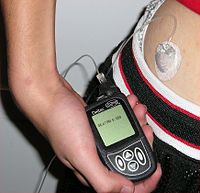Nanoelectronics refer to the use of nanotechnology on electronic components, especially transistors. Although the term nanotechnology is generally defined as utilizing technology less than 100 nm in size, nanoelectronics often refer to transistor devices that are so small that inter-atomic interactions and quantum mechanical properties need to be studied extensively. As a result, present transistors do not fall under this category, even though these devices are manufactured with 45 nm or 32 nm technology.
Nanoelectronics are sometimes considered as disruptive technology because present candidates are significantly different from traditional transistors. Some of these candidates include: hybrid molecular/semiconductor electronics, one dimensional nanotubes/nanowires, or advanced molecular electronics.


